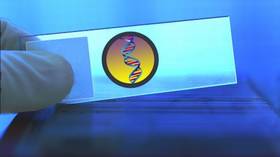‘Prime editing’: Scientists unveil new tool to DESTROY genetic diseases

It was once limited to the realm of mad scientists in scary movies, but the potential to alter a living human’s genes to eradicate disease is almost within our grasp, thanks to a new cutting-edge gene-editing tool.
The current state-of-the-art gene-editing tool, known as CRISPR-Cas9, is extremely powerful. But its lack of precision, high error rate and limited scope hamper its ability to treat human genetic diseases.
Now, a new tool developed by researchers at MIT and Harvard has the potential to correct 89 percent of the more than 75,000 human genetic mutations known to cause diseases.
Dubbed “prime editing”, the tool is capable of extremely precise editing, and could herald a new era of improved genetic manipulation, according to the team.
Prime editing offers a more stable approach because it makes very specific edits that involve breaking only one of the two strands of DNA and then making the changes right at the site of that cut. This means scientists no longer have to rely on a cell’s own DNA repair system to make the edits for them, drastically reducing the risk of unexpected or uncontrolled outcomes.
Also on rt.com One-hit wonder? Revolutionary CRISPR machine can edit hundreds of genes at onceIn developing the new tool, the research team performed 175 different DNA edits on human and mouse cells, finding that prime editing can precisely change DNA, while producing errors at much lower rates than current gene-editing technologies.
A paper on the results has been published in Nature, and other researchers have reportedly been hailing progress so far. “It’s early days, but the initial results look fantastic,” Brittany Adamson, who studies DNA repair and gene editing at Princeton University, said.
“The breadth of the mutations that can be introduced is one of the biggest advances,” said molecular biologist Erik Sontheimer of the University of Massachusetts Medical School. He added that the future of gene editing is likely to require a mix of different techniques to manage a range of targeted treatments.
Promising though the prime editing research has been so far, the team says there is much work to be done in the coming years, and this is “just the beginning - rather than the end - of a long-standing aspiration” to alter an organism’s DNA.
If you like this story, share it with a friend!















